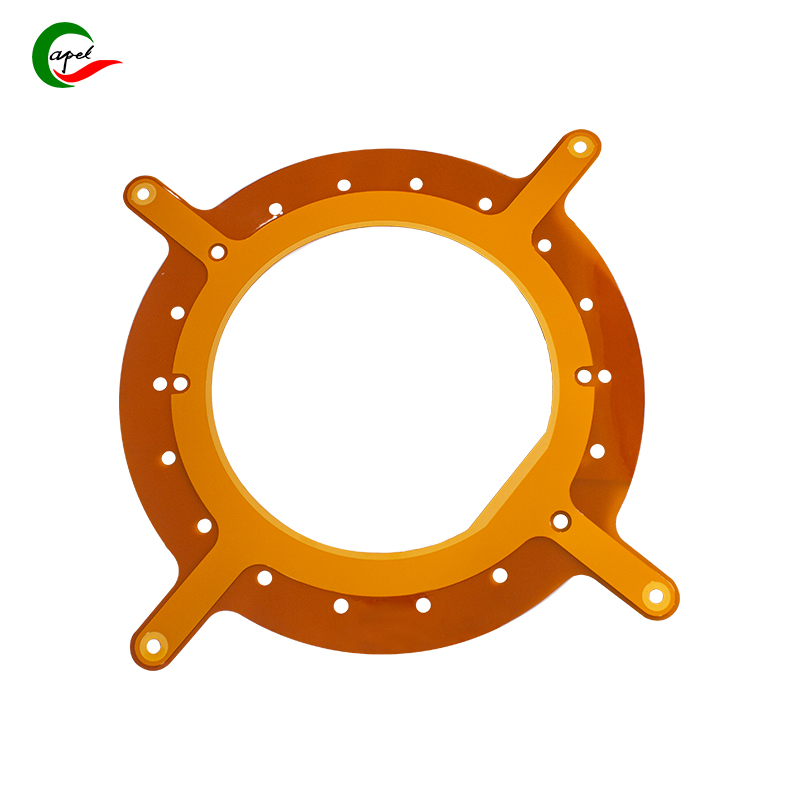Date: 2025-10-14
Let me share what we've learned about managing undercut in flexible PCB manufacturing. If you've ever seen traces that should be 0.1mm come out at 0.08mm, you've experienced the undercut problem firsthand. Through years of process optimization, we've developed practical approaches that balance precision with manufacturability.
Practical Undercut Guidelines Based on Trace Width
We've found that different trace widths require different undercut tolerances:
For fine traces (≤0.1mm), we maintain strict 5-8μm undercut control. Early in our medical device work, we learned that even 10μm undercut on 0.1mm traces reduced current capacity by 15% and created stress concentration points. The traces would fail during dynamic flex testing, something we discovered during a pacemaker component project.
With medium-width traces (0.1mm-0.3mm), we allow 8-12μm undercut. This range has proven reliable for signal integrity while keeping yields high. Most of our consumer electronics work falls in this category, and we've consistently met impedance tolerance requirements with these parameters.
For power traces (≥0.3mm), we permit 12-15μm undercut. The wider traces can tolerate this level of variation without significant performance impact. In one power management module, we found that 15μm undercut on 0.5mm power traces caused only a 3% increase in resistance - well within acceptable limits.
The Real Impact of Undercut on PCB Performance
Undercut does more than just change trace dimensions - it affects reliability in several ways:
The edge quality matters as much as the width reduction. We've observed that excessive undercut creates rough, scalloped edges that become initiation points for cracks during flexing. Our testing shows that traces with smooth edges withstand 3-4 times more bend cycles than those with jagged profiles.
Impedance control becomes challenging with inconsistent undercut. In high-speed designs, we've seen impedance variations up to 8% from undercut alone. This taught us to design with etching variations in mind, particularly for RF applications.
Factors That Actually Affect Undercut in Production
Through countless process experiments, we've identified key control points:
Etchant chemistry makes a significant difference. We switched from alkaline to acidic etchants five years ago and saw immediate 30% improvement in undercut consistency. The vertical etching characteristic of acidic solutions gives us much better control, especially for fine features.
Temperature control is more critical than many realize. We maintain our etchant at 40°C ±2°C - outside this range, we see undercut variations up to 5μm. The temperature consistency has proven crucial for batch-to-batch repeatability.
Spray pressure optimization took us six months to perfect. We found that 1.8 bar provides the ideal balance between etching speed and undercut control. Higher pressures save time but increase undercut; lower pressures improve precision but risk incomplete etching.
Common Pitfalls We've Encountered
One recurring issue involves photoresist adhesion. We learned that polyimide surfaces need thorough cleaning before resist application. Any contamination leads to etchant seepage and unpredictable undercut. Now we include contact angle testing in our quality checks to verify surface energy.
Another lesson came from etchant maintenance. We used to push etchant beyond its recommended lifespan, which caused gradual undercut increases. Now we track copper concentration and replace etchant proactively - the cost is minimal compared to scrapped panels.
Implementation Advice
Start by characterizing your etcher's capability across different trace widths. We created a test coupon that includes traces from 0.05mm to 0.5mm - running this through each etcher gives us baseline performance data.
Consider your application requirements when setting tolerances. Medical and aerospace projects get our tightest controls, while consumer applications can use more relaxed limits. This pragmatic approach has helped us optimize costs without compromising quality.
Monitor undercut regularly rather than assuming consistency. We measure undercut on every fifth panel using cross-section analysis. This proactive monitoring has helped us catch process drift before it affects production quality.
The Bottom Line
Successful undercut control requires understanding your specific manufacturing process and application needs. The 5-15μm range provides a good starting point, but the most reliable results come from continuous process monitoring and adjustment based on actual performance data.
related link:
Capel manufacturing PCBs since 2009. Professional technology and high-precision Printed Circuit Boards involved in Medical, IOT, UAV, Aviation, Automotive, Aerospace, Industrial Control, Artificial Intelligence, Consumer Electronics etc..